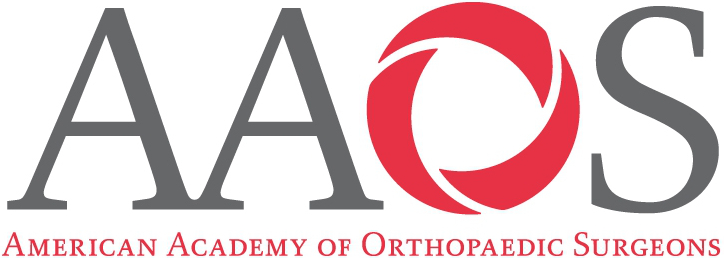We recognize that in the office setting, some specific laboratory values and other patient data are not always readily available. This also may include timely access to published scientific studies that can support clinical decision-making. Appropriate Use Criteria (AUC) specify when it is appropriate to perform a clinical procedure or service. An “appropriate” procedure is one for which the expected health benefits greatly exceed the expected health risks. Ideally, AUC are evidence-based, but in the absence of sufficient evidence, may be derived from a “consensus of expert opinion” and “accepted practice”.
With this AUC, we have attempted to define clinical situations in which antibiotic prophylaxis in certain at-risk dental patients could reduce a theoretical risk of post-surgical prosthetic joint infection. This AUC was developed as a decision support tool to facilitate the treatment of defined "high risk" and "immune compromised" patients who are on the more severe end of the clinical spectrum of disease. In the absence of readily available laboratory data or suggestive clinical suspicion, it would be reasonable to assume that most patients will fall outside of these criteria and therefore lay outside the confines of our strict definitions. As always, sound judgment should guide clinical decisions about when it may be necessary or prudent to delay a dental procedure until more information is available.
Assumptions:
Planned Dental Procedures
- The chance of oral bacteremia being related to joint infections is extremely low, with no evidence for an association.
- Oral bacteremia frequently occurs secondary to activities of daily living such as tooth brushing and eating.
- Virtually all dental office procedures have the potential to create bacteremia.
Immunocompromised Status
- Severely immunocompromised patients include:
- Patient with Stage 3 AIDS as defined by the Centers for Disease Control and Prevention (CDC) Guidelines when the immune system becomes severely compromised due to reduced CD4 T lymphocyte counts (<200) or opportunistic infection as defined by CDC8 see list of diseases below.
- Cancer patient undergoing immunosuppressive chemotherapy with febrile (Celsius 39) neutropenia (ANC <2000) OR severe neutropenia irrespective of fever (ANC <500)
- Rheumatoid arthritis with use of biologic disease modifying agents including tumor necrosis factor alpha or prednisone >10 mg per day. Methotrexate, Plaquenil not considered immunocompromising agents.
- Solid organ transplant on immunosuppressants
- Inherited diseases of immunodeficiency (e.g., congenital agammaglobulinemia, congenital IgA deficiency)
- Bone marrow transplant recipient in one of the following phases of treatment:
- Pretransplantation period
- Preengraftment period (approximately 0-30 d posttransplantation)
- Postengraftment period (approximately 30-100 d posttransplantation)
- Late posttransplantation period (≥100 d posttransplantation) while still on immunosuppressive medications to prevent GVHD (typically 36 months post transplantation) (see Table reference below)
*Opportunistic illness in AIDS: (as per CDC6)
- Bacterial infections, multiple or recurrent*
- Candidiasis of bronchi, trachea, or lungs
- Candidiasis of esophagus
- Cervical cancer, invasive†
- Coccidioidomycosis, disseminated or extrapulmonary
- Cryptococcosis, extrapulmonary
- Cryptosporidiosis, chronic intestinal (>1 month's duration)
- Cytomegalovirus disease (other than liver, spleen, or nodes), onset at age >1 month
- Cytomegalovirus retinitis (with loss of vision)
- Encephalopathy attributed to HIV§
- Herpes simplex: chronic ulcers (>1 month's duration) or bronchitis, pneumonitis, or esophagitis (onset at age >1 month)
- Histoplasmosis, disseminated or extrapulmonary
- Isosporiasis, chronic intestinal (>1 month's duration)
- Kaposi sarcoma
- Lymphoma, Burkitt (or equivalent term)
- Lymphoma, immunoblastic (or equivalent term)
- Lymphoma, primary, of brain
- Mycobacterium avium complex or Mycobacterium kansasii, disseminated or extrapulmonary
- Mycobacterium tuberculosis of any site, pulmonary†, disseminated, or extrapulmonary
- Mycobacterium, other species or unidentified species, disseminated or extrapulmonary
- Pneumocystis jirovecii (previously known as "Pneumocystis carinii") pneumonia
- Pneumonia, recurrent†
- Progressive multifocal leukoencephalopathy
- Salmonella septicemia, recurrent
- Toxoplasmosis of brain, onset at age >1 month
- Wasting syndrome attributed to HIV§
* Only among children aged <6 years.
† Only among adults, adolescents, and children aged ≥6 years.
§ Suggested diagnostic criteria for these illnesses, which might be particularly important for HIV encephalopathy and HIV wasting syndrome7, 8
Glycemic Control
- A1C scores should be recent within 3-6 months.
- Acucheck spot check in dental office blood glucose level is equivalent to a patient self-report.
- Blood glucose tests are assumed to be random (not necessarily fasting).
Citations:
6. Centers for Disease Control and Prevention (CDC) Revised surveillance case definition for HIV infection—United States, 2014. MMWR. Recommendations and Reports. 2014;63(3):1–10.
7. Centers for Disease Control and Prevention (CDC). 1994 Revised classification system for human immunodeficiency virus infection in children less than 13 years of age. MMWR 1994;43(No. RR-12).
8. Centers for Disease Control and Prevention (CDC). 1993 Revised classification system for HIV infection and expanded surveillance case definition for AIDS among adolescents and adults. MMWR 1992;41(No. RR-17).
Disclaimer
Volunteer physicians and dentists from multiple medical and dental specialties created and categorized these Appropriate Use Criteria. These Appropriate Use Criteria are not intended to be comprehensive or a fixed protocol, as some patients may require more or less treatment or different means of diagnosis. These Appropriate Use Criteria represent patients and situations that clinicians treating or diagnosing musculoskeletal conditions are most likely to encounter. The clinician’s independent medical judgment, given the individual patient’s clinical circumstances, should always determine patient care and treatment.
I have read and understand the assumptions and disclaimer Return to homepage
